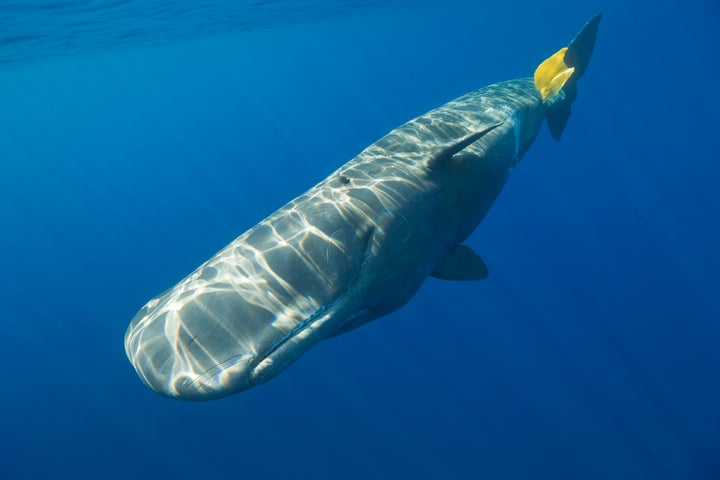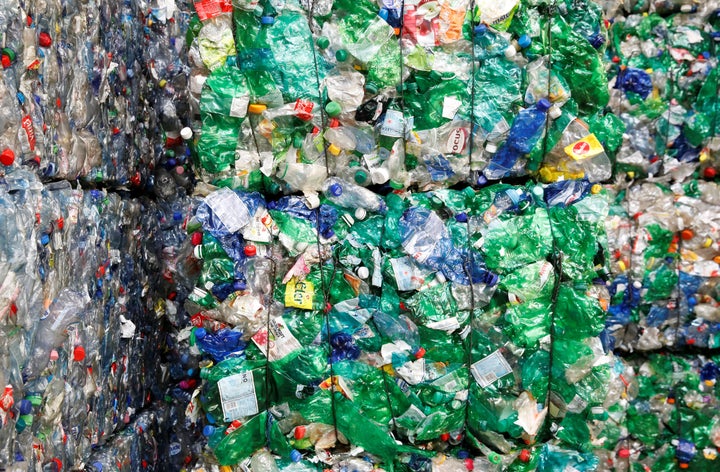Plastic waste in the ocean could nearly triple over the next two decades unless the world takes unprecedented levels of action now and completely changes the way it uses plastics, warns a new report released Thursday.
The study ― commissioned by nonprofit The Pew Charitable Trusts and sustainability consultancy and incubator SYSTEMIQ ― finds that if plastic production and consumption continues at the current pace, by 2040 there could be 600 million metric tons (661 million tons) of plastic polluting precious marine ecosystems, clogging waterways and sinking to the depths of the sea. Over the next two decades, we could see over 2.5 times more plastic in the ocean each year, the report projects.
“Unsurprisingly, people who dump waste in the environment don’t keep records, so there remains huge uncertainty amongst the many estimates of plastic pollution,” said one of the report’s researchers, Ed Cook, research fellow in circular economy systems for waste plastics at the University of Leeds. He hopes the report’s projections can provide more clarity about the scale of the issue to help decision-makers tackle the plastic waste crisis.
The study does not just point to the grim pollution statistics — it also sets out a pathway to tackle ocean plastics. If governments and businesses take action to immediately adopt solutions that already exist, the report predicts that by 2040 the world could reduce the amount of plastic waste entering our oceans by 80%.
There is no single solution that can succeed, the report makes clear; simply focusing on recycling or alternative materials alone would be nowhere near effective enough. Instead, the report lays out measures to completely change the way we use, produce and dispose of plastics from production, to use, to disposal. These include: reducing the amount of plastic produced in the first place by eliminating avoidable plastics and designing products for reuse; using alternative materials where appropriate; improving labelling to help people better understand what’s recyclable; and increasing waste collection.
The next two years are crucial for adopting these solutions, the report warns. Even a five-year delay in taking action could lead to an additional 80 million metric tons (88 million tons) of plastic in the ocean in 20 years. That’s equivalent to around 6.2 million garbage trucks’ worth of waste.

The plastics industry is a behemoth. Globally, it’s valued at $522.6 billion and is expected to double in capacity by 2040. The U.S. alone produced 35.4 million tons of plastic products in 2017, according to the Environmental Protection Agency (EPA). All this plastic is an urgent problem, for the world’s marine ecosystems, the report warns, and requires “a coherent global strategy.”
More than 800 animal species are affected by marine plastic pollution ― whether by becoming entangled in it or ingesting it, both of which could be fatal. This includes all species of sea turtles, more than 40% of all cetaceans like whales and dolphins, and 44% of marine birds.
Microplastics have been found everywhere, from remote mountain air to plants, including in the fruits and vegetables we eat. Meanwhile, the pollution created by the production of plastic continues to plague communities which have been fighting industry for decades to clean up the air they breathe.
Over the years, numerous campaigns, such as the campaign to ban plastic straws, have helped to raise global awareness about the plastic pollution crisis. As have devastating photographs of whales and other animals who have died due to ingesting plastic. And there has been some progress: most notably government bans on single-use plastics and grocery store fees for using disposable plastic bags.
“We need to change our relationship with plastic.”
- Simon Reddy, director of Pew’s International Environment program
But this isn’t enough ― especially as even this progress is under threat from the plastics industry, using the pandemic as an excuse to lobby for rollbacks of single-use plastic legislation. Based on the current commitments made by government and industry, the report states we can only expect a 7% decline in the amount of plastic waste flowing into the ocean by 2040.
It’s also become abundantly clear that relying on recycling alone is not enough. In fact, most plastic is never recycled; in the U.S. the EPA estimates just 8.4% was recycled in 2017. Instead, it piles up in landfills and clogs rivers, taking anywhere from 500 to 1,000 years to degrade.
“We need to change our relationship with plastic,” Simon Reddy, director of Pew’s International Environment program, told HuffPost. While most people have focused on increasing recycling as the only solution, and while that is still needed, he said, “Our study shows that stopping plastic pollution by capturing all plastic materials in the recycling process is neither technically nor financially feasible.”
Focusing solely on recycling would actually lead to an increase of 18 million metric tons (19.8 million tons) of plastic entering the oceans each year by 2040 ― that’s 65% higher than 2016 levels ― according to the report.

“A system-wide problem demands system-wide change,” the report notes.
The authors modeled scenarios where just one solution was implemented: recycling; or collection; or replacement and reduction of plastics. “None of these approaches was sufficient or realistic in isolation,” Cook said. “So we took a piece of each one, and with the help of our expert panel, created a vision of a future that was both realistically achievable and which helped to turn off the tap.”
Top of the list is producing less plastic.
In order to achieve the report’s 80% reduction goal, global demand for plastics must drop by 30%, and 17% of products currently made from plastics should be made with alternative compostable or fully recyclable materials.
In addition to reducing demand, the report’s pathway projects that by 2040, 20% of plastics will be recycled, 23% disposed of in controlled facilities, and 10% will remain “mismanaged.”
The approach should vary depending on the country, the paper suggests. High-income nations should prioritize decreasing overall plastic consumption, eliminating microplastic pollution, improving product design and increasing recycling rates. Meanwhile, middle- and low-income countries should invest in sorting and recycling infrastructure, increase the use of alternative non-plastic products and expand formal waste collection systems.
“Business has a crucial role to play,” said Reddy. Petrochemical companies, for example, need to reduce their investment in new plastic production infrastructure now, and instead innovate in design, he said.
The report identifies several solutions businesses should take immediately, such as eliminating over-packaging (like plastic-wrapped products inside another plastic bag) and using recyclable materials where possible.
Focusing on reducing certain types of plastics will also go a long way ― just a handful of plastics make up 85% of all plastic waste found in oceans. This includes thin plastics like cling wrap and pallet wraps, along with single-use plastic bags and drink bottles.

Meanwhile, microplastics must be targeted at the source, rather than trying to remove particles already released into the environment. This means adopting new ways of designing car tires and textiles ― two major sources of microplastics.
In addition to decreasing ocean plastic, all of these efforts would reduce annual plastic-related greenhouse gas emissions by 25%.
“A multifaceted set of actions, if implemented together, will get us on the right track,” Reddy said, admitting that “we have been surprised by the scale and complexity” of the challenge.
The cost of not acting is clear. The report estimates that it will be $70 billion more expensive over the next 20 years for governments to continue operating as they are ― with high levels of plastic production and waste ― than it would cost to adopt the report’s “system change scenario” to cut waste by 80% by 2040.
The incentive for businesses to be proactive is high too. According to the report, companies face $100 billion in annual costs should governments require them to cover their waste management costs at the current plastic consumption levels.
The challenge ahead is immense. Even if the world took on all of these solutions and successfully reduced the amount of waste entering the oceans by 80% in the next two decades, the researchers point out that over 5 million metric tons (5.5 million tons) of plastic would still find its way to our oceans each year by 2040.
In order to completely eliminate plastic waste, the report notes that the world will need to dramatically increase investment in new technology, research and business models.
“Brands and consumer goods companies are under mounting pressure to address plastic pollution,” Reddy said. But they have an “opportunity to lead the transition to sustainable new business models that, put simply, use a lot less plastic.”
Where plastic is used, he said, businesses must ensure the products are designed for reuse and recycling ― as well as helping fund the recycling system.
“This is about working together to find a way forward,” Reddy said.
HuffPost’s “Work In Progress” series focuses on the impact of business on society and the environment and is funded by Porticus. It is part of the “This New World” series. All content is editorially independent, with no influence or input from Porticus. If you have an idea or tip for the editorial series, send an email to thisnewworld@huffpost.com.